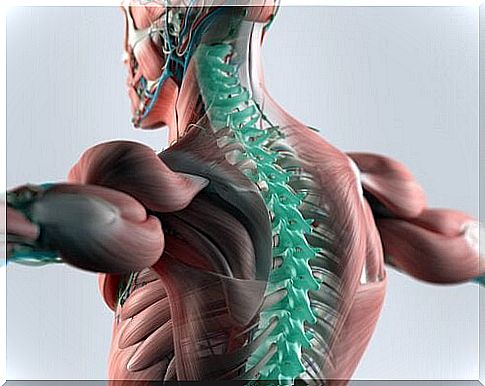The Cerebrospinal Fluid: Foundation Of The Central Nervous System

The cerebrospinal fluid is one of the most important fluids in the human body. Its main function is to protect the brain tissue and spinal cord.
It serves as a cushion that protects the central nervous system, skull and surrounding bones from impact. Under normal circumstances, the cerebrospinal fluid has a volume of between 100 and 150 milliliters.
It is transparent and it differs in composition from the liquid in serum, but is similar to that in the blood plasma. It also has the same consistency as water.
The main composition is H2O, minerals (sodium, potassium, calcium, chlorine), inorganic salts (phosphates) and vitamins (especially B vitamins). It contains electrolytes, leukocytes, amino acids, choline, nucleic acid and more.

An extracellular type of fluid
The body contains four fluid compartments, divided into intracellular and extracellular fluid. About two-thirds of the total amount of water in our body is intracellular or intravascular fluid.
That is the liquid part of the cytoplasm of the cells. The rest is extracellular. In fact, there are three types of extracellular fluid:
- Blood Plasma: This is the liquid part of the blood.
- Interstitial fluid: This occurs between cells.
- Finally, the cerebrospinal fluid: the fluid that is located in and around the spinal cord and brain.
Now let’s take a closer look at its composition, localization, and function.
Localization and circulation
An adult has about 140 ml of cerebrospinal fluid. The cerebrospinal fluid circulates through the subarachnoid space, the cerebral ventricles and the central canal. Let’s break these down:
- The subarachnoid space is the space between the spider web (arachnoides) and the soft meninges (pia mater). The pia mater is in contact with the brain surface. The small space through which the cerebrospinal fluid circulates thus separates the skull from the brain.
- The brain ventricles: These are four interconnected anatomical cavities located in the brain. Together they form the ventricular system, through which the cerebrospinal fluid circulates.
- The central canal: This is a canal in the middle of the spinal cord that is filled with cerebrospinal fluid. It runs from the medulla oblongata to mid-back, where the spinal cord ends.
Synthesis and journey of the cerebrospinal fluid
Most of the cerebrospinal fluid is created from the blood plasma in the choroid plexus of the cerebral ventricles. Once synthesized, it moves to the lateral ventricles (located in both hemispheres of the brain).
Finally, it passes through the foramina of Monro to the third ventricle, which is located at the level of the diencephalon or the interbrain.
From there it passes through the aqueduct of Sylvius and enters the fourth ventricle, which has a triangular shape and is located in the rhombencephalon or diamond brain, very close to the brainstem and cerebellum.
Once completed, it travels to the subarachnoid space through the foramina of Magendie and Luschka so that it can flow around the spinal cord and brain.

Finally, it is reabsorbed in the superior sagittal sinus (a passive process that requires no energy). Under normal circumstances, the cerebrospinal fluid reabsorbs very quickly, almost at the same rate as it forms in the choroid plexus. This makes the intracranial pressure always constant.
The cerebrospinal fluid renews about six or seven times a day and the average cycle usually lasts no more than three hours.
When the channels through which the cerebrospinal fluid circulates block and the cerebrospinal fluid accumulates in a compartment of the brain, we speak of hydrocephalus, also known as hydrocephalus. The direct result is an increase in intracranial pressure.
Functions of the cerebrospinal fluid
The cerebrospinal fluid has many different functions:
- It protects the central nervous system from possible trauma, strokes and impacts. We can safely say that it can dampen intracranial movement by up to 97%.
- It has a dual biological function. On the one hand, nutrition, because it is in charge of the transport of hormones, antibodies and lymphocytes to the nervous tissue. On the other hand, removal, because it removes the neuronal metabolic residue.
- It acts as an electrical insulator of the spinal cord.
- It helps diagnose a range of neurological disorders, meninges changes, subarachnoid hemorrhages or cerebrospinal tumors.
- It is the entry point for epidural anesthesia.
As you can see, the cerebrospinal fluid is essential for the maintenance and maintenance of the central nervous system. Small changes in its density or quantity can therefore have serious consequences for the functioning of the brain.








